Kate Forsyth's Blog, page 48
December 10, 2013
SPOTLIGHT: Fie on the Feisty Heroine!
Fie on the Feisty Heroine! I say.
I’m been a little troubled recently by the plethora of ‘feisty heroines’ in the historical fiction I’ve been reading.
Don’t get me wrong. I love a strong woman!
Yet the truth is that the way that many of these heroines speak and act is utterly anachronistic. It rings untrue, and that breaks the spell of enchantment the book should be casting over me.
In truth, strong women in the past were, more often than not, broken by their society. They were beaten, locked in scold-bridles, burnt to death for petty treason, stoned or imprisoned or locked away in towers or convents. Most learned very early on to do as they were told.
Of course there were exceptions. Women who ran away to war, dressed as a boy, and were not discovered for years, for example (Wikipedia has a fascinating list of them)
[image error]
Joan of Arc being burnt at the stake
And history is full of women who were rebellious and rowdy, passionate and powerful – Cleopatra (killed herself with an asp). Boadicea (committed suicide rather than be taken captive by her enemies). Joan of Arc (burnt at the stake). Eleanor of Aquitaine (kept locked up by her husband for years). Emmeline Pankhurst (imprisoned and force-fed) …
[image error]
Emmeline Pankhurst being arrested
Of course I’m being selective here to make a point. There are many amazing women in history that lived mostly happy lives and achieved astonishing things. Empress Theodora. Elizabeth I. Marie Curie. Florence Nightingale. Mary Wollstonecraft.
[image error]
Marie Curie, a woman alone in a world of men
However, these are the exceptions, not the rule.
This poses a difficult problem for historical novelists. On the one hand, we want to write books with strong, interesting, clever heroines. On the other hand, we need to be true to the times in which our heroines live.
It can help if we write about heroines outside the cultural norm. In my historical children’s series The Chain of Charms, which is set in the last few weeks of Oliver Cromwell’s life, my heroine is a Rom. This means she is free to gallop about the countryside and have adventures instead of sit quietly and sew her sampler as girls in the mid-1600s were expected to do.
[image error]
I recently read Act of Faith by Kelly Gardiner, which is set in the 1640s. Her heroine, Isabella Hawkwood, is the daughter of an Oxford don and philosopher and has been taught to read Latin, Greek and many other languages, as well as to think deeply and clearly. She is headstrong and impetuous and does many things that would be considered utterly scandalous in that period of time. However, she is constantly having to hide her intelligence and her learning, and she is also afraid and unsure, giving her character greater depth. (Here's my review of Act of Faith)
I ran up against this problem all the time in my novel The Wild Girl, which is inspired by the true untold love story between Wilhelm Grimm and Dortchen Wild, the young woman who told him many of the world’s most famous fairy tales. How I wanted Dortchen to be feistier! But she was the product of her time and her culture – the strict, puritanical and patriarchal world of Germany in the early 19th century. I could make her long for a world in which women were free to make their own choices, but I could not give her that world.
[image error]
Dortchen could not marry without her father’s permission.
She could not go to school past the age of 14, let alone go on to university.
She could not get a job.
She could not even choose what to wear.
And, to tell you the truth, I think that my Dortchen shows greater strength and resilience in finding her way forward in the life she was given than if I had made her dress up as a boy and run away to fight in the Napoleonic Wars. Because the life I have created for her is as true as I could make it. It doesn’t turn history into a fantasyland where women dress in tight leather corsets and can kickbox (though, mind you, I do love a good, kick-ass, leather-clad heroine too! Just not in a historical novel).
In The Wild Girl, I have tried to show how difficult life was for women in the past, so that we can make sure that we don’t forget all that has been won for us.
This is why I say: Fie on the feisty heroine!
Give me women who are vulnerable as well as strong, conflicted as well as determined, kind-hearted as well as quick-witted, and who have to truly struggle to make their way in a world that does not pretend to make life easy for women.
One last final note: did you know the word ‘feisty’ comes from the German word feist, a derogatory term for a lapdog?
What about you? Do you love a feisty heroine, or do also you think they are perhaps becoming a little cliched?
Let me know what you think by leaving a comment - I always love to know what you think.
Published on December 10, 2013 16:37
December 8, 2013
BOOK REVIEW: Act of Faith by Kelly Gardiner
[image error]
Title: Act of Faith
Author: Kelly Gardiner
Publisher: Harper Collins Australia
Age Group & Genre: Historical Fiction for Young Adults
Reviewer: Kate Forsyth
The Blurb:
England,1640. Sixteen-year-old Isabella is forced to flee her home when her father’s radical ideas lead him into a suicidal stand against Oliver Cromwell’s army. Taking refuge in Amsterdam and desperate to find a means to survive, Isabella finds work with an elderly printer, Master de Aquila, and his enigmatic young assistant, Willem.
When Master de Aquila travels to Venice to find a publisher brave enough to print his daring new book, Isabella accompanies him and discovers a world of possibility -where women work alongside men as equal partners, and where books and beliefs are treasured.
But in a continent torn apart by religious intolerance, constant danger lurks for those who don’t watch their words. And when the agents of the Spanish Inquisition kidnap de Aquila to stop him printing his book, Isabella and Willem become reluctant allies in a daring chase across Europe to rescue him from certain death.
What I Thought:
Act of Faith is an intoxicating mixture of history, adventure, romance and philosophy. It is, I think, one of the cleverest books to be published for young adults in the past few years, yet it wears its scholarship lightly.
The novel is set in 1640, one of my all-time favourite historical periods. England is in the midst of the English Civil War, a time of extraordinary political and religious upheaval. King Charles I has had his head lopped off, and Oliver Cromwell rules the land with an iron fist. Catholics and Royalists are being executed, while in Europe anyone who questions the absolute rule of either the Catholic church or the monarch are persecuted cruelly, many of them burned to death.
The heroine of the tale is Isabella Hawkins, daughter of an Oxford don and philosopher. She has been taught by her father to read Greek and Latin, as well as many other languages, but she has to hide her brilliance for in the mid-17th century, educated women were considered quite freakish.
When Master Hawkins is imprisoned for his ideas, Isabella helps her father escape but sets in chain a sequence of events that will end in tragedy and exile. She ends up alone, in Amsterdam, working with a printer who is publishing seditious books and smuggling them all over the world. Danger is all around her, but Isabella is determined to work for political liberty and intellectual freedom.
The story moves from London to Amsterdam to Venice to Spain, and brings the world of 17th century Europe vividly to life. It is crammed full of ideas, yet is never difficult to understand, and the pace rarely flags. With a gorgeous cover and interior design from the Harper Collins designers, this is a book both beautiful and brilliant, and one I highly recommend.
Kelly's website: http://kellygardiner.com/
If you enjoyed this blog, you may also enjoy BOOK LIST: Best books set during the time of Charles II
http://www.kateforsyth.com.au/kates-blog/best-books-set-during-the-times-of-charles-ii
PLEASE LEAVE A COMMENT – I LOVE TO KNOW WHAT YOU THINK
Published on December 08, 2013 20:48
December 5, 2013
INTERVIEW: Marci Jefferson author of The Girl on the Golden Coin
Please welcome Marci Jefferson, the debut author of the historical novel: The Girl on the Golden Coin! I just loved her book (you can read my review here) and I hope its the beginning of many more wonderful historical novels from her.

Are you a daydreamer too?
Oh yes. As a kid, if I wasn’t reading, I was daydreaming. Even at school!
Have you always wanted to be a writer?
No. For most of my life I didn’t know what I wanted to be. I became a nurse because it was practical, and then I focused intently on nursing because it was so rewarding. Then I wanted to be a mother - even more rewarding. I decided I wanted to write historical fiction after reading The Other Boleyn Girl - but I didn’t realize at the time what *being* a writer was even like. It is rewarding in unforeseen ways, but it is also all-consuming.
Tell me a little about yourself – where were you born, where do you live, what do you like to do?
I was born in New Mexico. I’m an Air Force Brat - we lived all over the southern United States and twice in the Philippines. Now I live in the Midwest. These days my interests are limited by time constraints to parenting, researching, and writing. Oh, and I still work part-time as a nurse.
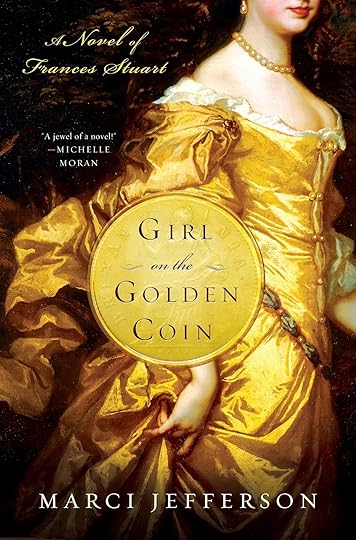
How did you get the first flash of inspiration for this book?
I learned about the Stuarts years ago on a trip to London. As a history lover, I read everything about them that no one bothered to teach me in nursing school. Years later, when I read The Other Boleyn Girl, the seed was planted. I knew I wanted to write something about the Stuarts...but the plot developed slowly.
Do you ever use dreams as a source of inspiration?
I do dream about my characters, but I can’t say my dreams inspired any particular scenes.
Did you make any astonishing serendipitous discoveries while writing this book?
While researching Frances Stuart, I was gratified to learn she was not the featherbrain so many people assume she was. Nor was her life story so simple. She wasn’t just a pretty maid of honor at the Restored English Court known throughout Europe for its debauchery. She survived complex and dangerous historical events such as the French Fronds, the unresolved political tensions after the English Civil Wars, the Great Plague, the Great Fire, the Anglo Dutch War, poverty, riches, and the fractious religious conflicts inherent to seventeenth century England.
Her letters prove her to be intelligent, kind-hearted, and tolerant. I realized she embodied the spirit of the Restoration era, which, combined with her portrait as Britannia on the coins, made her a compelling subject for a historical novel.
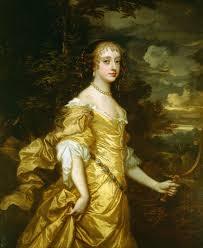
Where do you write, and when?
When my kids were little I restricted my writing to naptimes and bedtimes. Now that they’re in school and I work as a nurse part time, I have two full days at home each week designated for writing. When my kids are at home, I have to escape to the local library to get my writing done.
What is your favourite part of writing?
I love and adore the historical research. In fact, sometimes I get a bit too caught up in little discoveries. I call it researchitis. But while actually writing, I love it when a character comes so alive that they take unexpected turns in my own narrative.
What do you do when you get blocked?
My blocks tend to pop up when I’m not clear on historical details. So I research.
How do you keep your well of inspiration full?
History is full of inspiration and inspirational characters! The more I read and learn, the more intrigued I am.
Do you have any rituals that help you to write?
Unfortunately, I like to have a snack while writing. This has necessarily led to scheduling in some time for exercise!
Who are ten of your favourite writers?
Just ten? I’ll try...
Michelle Moran
Kate Quinn
Margaret George
Philippa Gregory
Tracy Chevalier
Sarah Dunant
Madeline Hunter
Anne Rice
Diana Gabaldon
Alice Hoffman
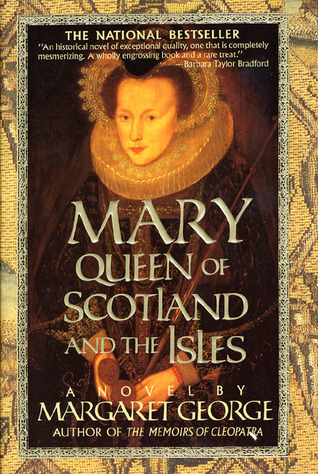
What do you consider to be good writing?
Engaging writing, be it lyrical or simplistic, is good writing. I like tight sentences. Active scenes. Subversive dialogue. Tension on every page. Complex characters.
What is your advice for someone dreaming of being a writer too?
Write every day and never ever give up.
What are you working on now?
A novel about Marie Mancini who, based on the alignment of the stars at her birth, was destined to disgrace her family an a most spectacular fashion, but ended up shaping the world’s most powerful monarch. It’s loosely titled INAMORATA, A NOVEL OF ENCHANTMENT AT THE SUN KING’S COURT.
Marci Jefferson's website
PLEASE LEAVE A COMMENT, I LOVE TO KNOW WHAT YOU THINK!

Are you a daydreamer too?
Oh yes. As a kid, if I wasn’t reading, I was daydreaming. Even at school!
Have you always wanted to be a writer?
No. For most of my life I didn’t know what I wanted to be. I became a nurse because it was practical, and then I focused intently on nursing because it was so rewarding. Then I wanted to be a mother - even more rewarding. I decided I wanted to write historical fiction after reading The Other Boleyn Girl - but I didn’t realize at the time what *being* a writer was even like. It is rewarding in unforeseen ways, but it is also all-consuming.
Tell me a little about yourself – where were you born, where do you live, what do you like to do?
I was born in New Mexico. I’m an Air Force Brat - we lived all over the southern United States and twice in the Philippines. Now I live in the Midwest. These days my interests are limited by time constraints to parenting, researching, and writing. Oh, and I still work part-time as a nurse.

How did you get the first flash of inspiration for this book?
I learned about the Stuarts years ago on a trip to London. As a history lover, I read everything about them that no one bothered to teach me in nursing school. Years later, when I read The Other Boleyn Girl, the seed was planted. I knew I wanted to write something about the Stuarts...but the plot developed slowly.
Do you ever use dreams as a source of inspiration?
I do dream about my characters, but I can’t say my dreams inspired any particular scenes.
Did you make any astonishing serendipitous discoveries while writing this book?
While researching Frances Stuart, I was gratified to learn she was not the featherbrain so many people assume she was. Nor was her life story so simple. She wasn’t just a pretty maid of honor at the Restored English Court known throughout Europe for its debauchery. She survived complex and dangerous historical events such as the French Fronds, the unresolved political tensions after the English Civil Wars, the Great Plague, the Great Fire, the Anglo Dutch War, poverty, riches, and the fractious religious conflicts inherent to seventeenth century England.
Her letters prove her to be intelligent, kind-hearted, and tolerant. I realized she embodied the spirit of the Restoration era, which, combined with her portrait as Britannia on the coins, made her a compelling subject for a historical novel.

Where do you write, and when?
When my kids were little I restricted my writing to naptimes and bedtimes. Now that they’re in school and I work as a nurse part time, I have two full days at home each week designated for writing. When my kids are at home, I have to escape to the local library to get my writing done.
What is your favourite part of writing?
I love and adore the historical research. In fact, sometimes I get a bit too caught up in little discoveries. I call it researchitis. But while actually writing, I love it when a character comes so alive that they take unexpected turns in my own narrative.
What do you do when you get blocked?
My blocks tend to pop up when I’m not clear on historical details. So I research.
How do you keep your well of inspiration full?
History is full of inspiration and inspirational characters! The more I read and learn, the more intrigued I am.
Do you have any rituals that help you to write?
Unfortunately, I like to have a snack while writing. This has necessarily led to scheduling in some time for exercise!
Who are ten of your favourite writers?
Just ten? I’ll try...
Michelle Moran
Kate Quinn
Margaret George
Philippa Gregory
Tracy Chevalier
Sarah Dunant
Madeline Hunter
Anne Rice
Diana Gabaldon
Alice Hoffman

What do you consider to be good writing?
Engaging writing, be it lyrical or simplistic, is good writing. I like tight sentences. Active scenes. Subversive dialogue. Tension on every page. Complex characters.
What is your advice for someone dreaming of being a writer too?
Write every day and never ever give up.
What are you working on now?
A novel about Marie Mancini who, based on the alignment of the stars at her birth, was destined to disgrace her family an a most spectacular fashion, but ended up shaping the world’s most powerful monarch. It’s loosely titled INAMORATA, A NOVEL OF ENCHANTMENT AT THE SUN KING’S COURT.
Marci Jefferson's website
PLEASE LEAVE A COMMENT, I LOVE TO KNOW WHAT YOU THINK!
Published on December 05, 2013 05:00
December 3, 2013
BOOK LIST: Best Books set during the times of Charles II
BEST BOOKS SET DURING THE TIME OF CHARLES II
[image error]
I’ve always loved stories set in Stuart times, perhaps because my grandmother told me, when I was a little girl, that we were related to the Stuart royal family. When she said ‘we’, she really meant the Clan of Mackenzie, which does indeed have links to the doomed royal family of Scotland, but so long ago and so far away from my own great-great-grandmother Ellen Mackenzie that I could never lay claim to such a connection with a straight face.
Nonetheless, growing up, I read quite a few books set in Scotland and quite a few about the Stuarts. I set ‘The Chain of Charms’, my series of children’s historical adventure stories, in the last days of the rule of Oliver Cromwell and one of my favourite stories to tell at schools and storytelling festivals is the escape of Charles II after the final disastrous defeat to Oliver Cromwell’s army.
Here is a list of my favourite books set during the years of the English Civil War and the Restoration. This blog first ran in May 2013, but I have updated it to include the books I've read in the past year.
Favourite Books I read as a Kid:
Sidney Seeks Her Fortune- Catherine Christian
This is an adventure story about a Cavalier family that lost all its money fighting for the king, and sets outs to restore its fortunes. It includes shipwrecks, highwaymen, pirates, romance and the eventual triumph of its heroine, the steadfast Sidney of the title, and writing about it makes me want to read it all over again …
[image error]
The Popinjay Stairs – Geoffrey Trease
I really love all of Geoffrey Trease’s books, but this is one of my favourites. The novel begins with a highwayman waylays a coach that numbers among its passengers Samuel Pepys, who is at that time Secretary to the Office of Lord High Admiral of England. The highway men seem more interested in Pepys’official document case than in gold and watches … and this sets off a wild adventure dealing in treason, blackmail and spies.
Rider of the White Horse – Rosemary Sutcliff
I also adore Rosemary Sutcliff. This is not one of my favourite, but it is still a vivid and engaging historical novel, telling the story of Anne Fairfax, the wife of a Puritan general, Sir Thomas Fairfax. As always, the writing is vivid and supple and evocative.
The House at Green Knowe – Lucy M. Boston
This book has only one scene set during the English Civil War, but it always lingered in my memory.
Favourite Books I Read as a Teenager:
Royal Escape – Georgette Heyer
One of her few straight historical novels, this book tells the story of Charles II’s dramatic six week escape from England after the last, disastrous battle of the English Civil war.
The Wandering Prince – Jean Plaidy
The story of the years Charles II spent in exile as a young man after the loss of his crown, as seen through the eyes of his sister Minette, and his mistress Lucy Walter – Jean Plaidy is not much read these days, but I adored her as a teenager and read every book of hers I can lay my hands on. The Stuart saga was a favourite – it follows on with ‘A Health Unto His Majesty’ which I also really enjoyed.
Frenchman’s Creek – Daphne du Maurier
A wonderfully romantic and adventurous book set in Restoration England, about the affair between a bored English noblewoman and a daring French pirate.
Favourite Books I’ve Read in Recent Years
Year of Wonders – Geraldine Brooks
A brilliant novel about the plague village of Ayam – one of my all-time favourite novels.
Read my interview with Geraldine Brooks
[image error]
Lady’s Slipper – Deborah Swift
A fabulous historical novel filled with romance, murder, art, and one rare and gorgeous orchid.
You can read my full review here
[image error]
Empress of Icecream – Anthony Capella
A historical novel about the invention of ice cream, and the seduction of Charles II by the French spy, Louise de Keroualle.
[image error]
The Darling Strumpet - Gillian Bagwell
A wonderful novel inspired by the life of Nell Gwyn, one of Charles II's most famous mistresses. Here is my full review of the book and an interview with Gillian Bagwell.
The September Queen – Gillian Bagwell
The story of Lady Jane, the young woman who helped Charles II escape England after failing to win back his crown.
[image error]
An Instance of the Fingerpost – Iain Pears
An utterly brilliant historical thriller set after the restoration of Charles II, it has so many unexpected twists and turns I gasped aloud at several points in the narrative. Another all-time favourite novel of mine - a must read for any lover of clever, intriguing historical fiction.
[image error]
The Girl on the Golden Coin: A Novel of Frances Stuart - Marci Jefferson
A wonderful novel set at the royal court after the Restoration, The Girl on the Golden Con tells the story of the beautiful, spirited young woman chosen to be the face of Britannica by Charles II. You can read my full review here.
If you liked this list, you may also enjoy:
Some of my favourite books set in Tudor times
Some of my Favourite Books set in France
Some of my favourite romance novels
[image error]
I’ve always loved stories set in Stuart times, perhaps because my grandmother told me, when I was a little girl, that we were related to the Stuart royal family. When she said ‘we’, she really meant the Clan of Mackenzie, which does indeed have links to the doomed royal family of Scotland, but so long ago and so far away from my own great-great-grandmother Ellen Mackenzie that I could never lay claim to such a connection with a straight face.
Nonetheless, growing up, I read quite a few books set in Scotland and quite a few about the Stuarts. I set ‘The Chain of Charms’, my series of children’s historical adventure stories, in the last days of the rule of Oliver Cromwell and one of my favourite stories to tell at schools and storytelling festivals is the escape of Charles II after the final disastrous defeat to Oliver Cromwell’s army.
Here is a list of my favourite books set during the years of the English Civil War and the Restoration. This blog first ran in May 2013, but I have updated it to include the books I've read in the past year.
Favourite Books I read as a Kid:
Sidney Seeks Her Fortune- Catherine Christian
This is an adventure story about a Cavalier family that lost all its money fighting for the king, and sets outs to restore its fortunes. It includes shipwrecks, highwaymen, pirates, romance and the eventual triumph of its heroine, the steadfast Sidney of the title, and writing about it makes me want to read it all over again …
[image error]
The Popinjay Stairs – Geoffrey Trease
I really love all of Geoffrey Trease’s books, but this is one of my favourites. The novel begins with a highwayman waylays a coach that numbers among its passengers Samuel Pepys, who is at that time Secretary to the Office of Lord High Admiral of England. The highway men seem more interested in Pepys’official document case than in gold and watches … and this sets off a wild adventure dealing in treason, blackmail and spies.
Rider of the White Horse – Rosemary Sutcliff
I also adore Rosemary Sutcliff. This is not one of my favourite, but it is still a vivid and engaging historical novel, telling the story of Anne Fairfax, the wife of a Puritan general, Sir Thomas Fairfax. As always, the writing is vivid and supple and evocative.
The House at Green Knowe – Lucy M. Boston
This book has only one scene set during the English Civil War, but it always lingered in my memory.
Favourite Books I Read as a Teenager:
Royal Escape – Georgette Heyer
One of her few straight historical novels, this book tells the story of Charles II’s dramatic six week escape from England after the last, disastrous battle of the English Civil war.
The Wandering Prince – Jean Plaidy
The story of the years Charles II spent in exile as a young man after the loss of his crown, as seen through the eyes of his sister Minette, and his mistress Lucy Walter – Jean Plaidy is not much read these days, but I adored her as a teenager and read every book of hers I can lay my hands on. The Stuart saga was a favourite – it follows on with ‘A Health Unto His Majesty’ which I also really enjoyed.
Frenchman’s Creek – Daphne du Maurier
A wonderfully romantic and adventurous book set in Restoration England, about the affair between a bored English noblewoman and a daring French pirate.
Favourite Books I’ve Read in Recent Years
Year of Wonders – Geraldine Brooks
A brilliant novel about the plague village of Ayam – one of my all-time favourite novels.
Read my interview with Geraldine Brooks
[image error]
Lady’s Slipper – Deborah Swift
A fabulous historical novel filled with romance, murder, art, and one rare and gorgeous orchid.
You can read my full review here
[image error]
Empress of Icecream – Anthony Capella
A historical novel about the invention of ice cream, and the seduction of Charles II by the French spy, Louise de Keroualle.
[image error]
The Darling Strumpet - Gillian Bagwell
A wonderful novel inspired by the life of Nell Gwyn, one of Charles II's most famous mistresses. Here is my full review of the book and an interview with Gillian Bagwell.
The September Queen – Gillian Bagwell
The story of Lady Jane, the young woman who helped Charles II escape England after failing to win back his crown.
[image error]
An Instance of the Fingerpost – Iain Pears
An utterly brilliant historical thriller set after the restoration of Charles II, it has so many unexpected twists and turns I gasped aloud at several points in the narrative. Another all-time favourite novel of mine - a must read for any lover of clever, intriguing historical fiction.
[image error]
The Girl on the Golden Coin: A Novel of Frances Stuart - Marci Jefferson
A wonderful novel set at the royal court after the Restoration, The Girl on the Golden Con tells the story of the beautiful, spirited young woman chosen to be the face of Britannica by Charles II. You can read my full review here.
If you liked this list, you may also enjoy:
Some of my favourite books set in Tudor times
Some of my Favourite Books set in France
Some of my favourite romance novels
Published on December 03, 2013 05:00
December 1, 2013
BOOK REVIEW: The Girl on the Golden Coin by Marci Jefferson

Title: Girl on the Golden Coin: A Novel of Frances Stuart
Author: by Marci Jefferson
Publisher: Thomas Dunne Books
Age Group & Genre: Historical Fiction for Adults
Reviewer: Kate Forsyth
The Blurb:
Impoverished after the overthrow of the English Crown, Frances Stuart survives merely by her blood-relation to the Stuart Royals.
But in 1660, the Restoration of Stuart Monarchy in England returns her family to favor. Frances discards threadbare gowns for gilded Fontainebleau Palace, where she soon catches King Louis XIV’s eye. But Frances is no ordinary court beauty, she has Stuart secrets to keep and people to protect. The king turns vengeful when she rejects his offer to become his Official Mistress. He banishes her to England with orders to seduce King Charles II and stop a war ...
What I Thought:
The Restoration is one of my absolute favourite periods of history and I have read a lot of books set in that period (Here is a list of my favourite books set during the reign of Charles II)
However, I had never read about Frances Stuart before and so I found this novel of her life by Marci Jefferson utterly fascinating.
Frances is a distant cousin of Charles II whose family lost everything in the English Civil War and their subsequent exile with the royal court. Frances has only her beauty and her wit to help her survive in the decadent Restoration court, but she uses both to high advantage. Spying for the French king, Louis XIV, on the one hand and keeping a sensual King Charles II on a short leash with the other hand, Frances must keep a clear head without losing her heart –which proves far more difficult than she imagined.
I particularly loved the characterisation of the king and his many mistresses, particularly Barbara Castlemaine, and the vividness of the court setting. A wonderful read for anyone who loves historical fiction.
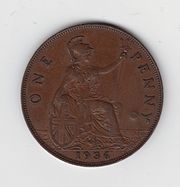
Marci Jefferson's website
PLEASE LEAVE A COMMENT – I LOVE TO KNOW WHAT YOU THINK
Published on December 01, 2013 19:25
November 24, 2013
SPOTLIGHT: Frances Hodgson Burnett author of The Secret Garden
“Everything's a story. You are a story - I am a story.”
Frances Hodgson Burnett, A Little Princess
Today (24 November) is both my mother’s birthday and the birthday of one of my all-time favourite children’s authors - Frances Hodgson Burnett.
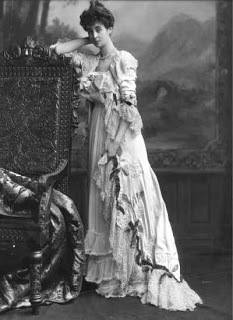
She was born on this day in 1849, in Cheetham, near Manchester in the UK. Her father died when she was only three and after struggling along for some time, her poverty-stricken mother emigrated to the US when Frances was 16, settling in Tennessee. Frances began writing and publishing stories at the age of 19 to help earn money for her family.
She became friends with a lame boy called Swan Burnett who lived across the street and introduced him to all the books she most loved. Soon she was earning enough money from her writing to move her family into a bigger house and to travel to Europe. She returned to the US to marry her childhood sweetheart, Swan Burnett, and then they lived in Paris for a few years (lucky thing!) She had two sons, Lionel and Vivian.
Her first novel ‘That Lass o' Lowries’ was published in the UK and UK in 1877 and she went on to write several more novels for adults. After meeting Louis May Alcott, she decided to try her hand at writing for children and ‘Little Lord Fauntleroy’ was published in 1886 (people mock her for this book today, but it was hugely popular at the time and prompted a fashion for little boys to wear velvet suits with lace collars and long hair, which is how she liked to dress her own sons).
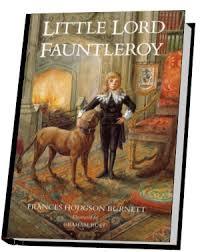
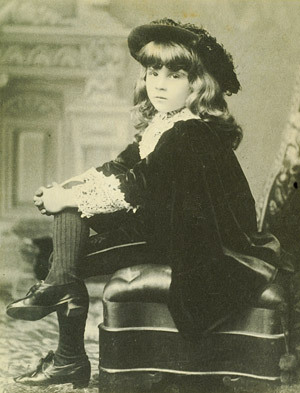
The character of Little Lord Fauntleroy is thought to be modelled on her younger son Vivian, pictured left
Life was not all sweet, however. Frances’s marriage was in trouble, and then her eldest son contracted tuberculosis. His death plunged her into depression, but she continued to write, publishing numerous books for adults with titles like A Lady of Quality (1896) and The Making of a Marchioness (1901). Her eventual divorce from her husband caused a scandal.
At this time she turned away from her traditional faith in the Church of England to embrace Spiritualism. She lived separately from her husband and became involved with a handsome younger man who had ambitions as an actor.
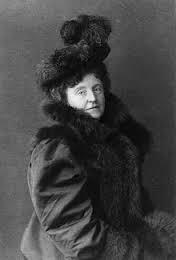
In 1905 she published ‘A Little Princess’, which I absolutely adored as a child and read many times. A few of my favourite quotes:
“Whatever comes," she said, "cannot alter one thing. If I am a princess in rags and tatters, I can be a princess inside. It would be easy to be a princess if I were dressed in cloth of gold, but it is a great deal more of a triumph to be one all the time when no one knows it.”
“How it is that animals understand things I do not know, but it is certain that they do understand. Perhaps there is a language which is not made of words and everything in the world understands it. Perhaps there is a soul hidden in everything and it can always speak, without even making a sound, to another soul.”
“If nature has made you for a giver, your hands are born open, and so is your heart; and though there may be times when your hands are empty, your heart is always full, and you can give things out of that--warm things, kind things, sweet things--help and comfort and laughter--and sometimes gay, kind laughter is the best help of all.”
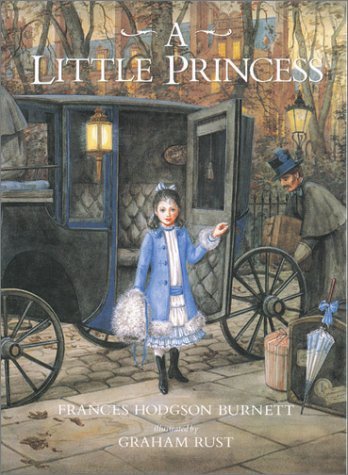
From 1898 to 1907, Frances lived in England at Great Maytham, an old country house which had been damaged by fire and let half in ruins . One day, aided by a robin, she found the old walled garden dating from 1721 sadly overgrown and neglected. She had the garden restored, planting hundreds of roses, set up a table and chair in the gazebo, and - dressed always in a white dress and large hat - wrote a number of books in her secret garden’s peace and tranquillity.
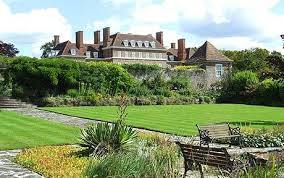
Her younger lover Stephen Townsend came to live with her there, scandalising the vicar, and so in February 1900 she married him. The marriage was very unhappy and Frances suffered depression and illness. Two years later, she divorced him.
Frances was inspired to write her most famous book ‘The Secret Garden’ by her own discovery of the forgotten garden at Great Maytham, though much of it as written at another grand country manor house, Buile Hill Park.
The book’s working title was ‘Mistress Mary’, referring to the English nursery rhyme Mary, Mary, Quite Contrary. It was first serialised in The American Magazine from autumn 1910, then published in the summer of 1911 by Frederick A. Stokes in New York, and by Heinemann in London. The 1911 edition was illustrated by M.B.Kork.
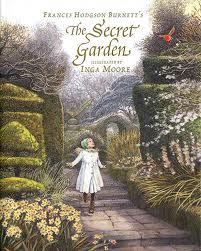
It is one of my own all-time favourite books. I have read it many hundreds of times, including to my own children. I think my own love of flower, plants and gardens (especially secret gardens) was inspired by this book. I particularly love the sense of joyousness in the book, and the feeling that magic and miracles can happen if you just believe hard enough.
Some favourite quotes:
“One of the strange things about living in the world is that it is only now and then one is quite sure one is going to live forever and ever and ever. One knows it sometimes when one gets up at the tender solemn dawn-time and goes out and stands out and throws one's head far back and looks up and up and watches the pale sky slowly changing and flushing and marvelous unknown things happening until the East almost makes one cry out and one's heart stands still at the strange unchanging majesty of the rising of the sun--which has been happening every morning for thousands and thousands and thousands of years. One knows it then for a moment or so. And one knows it sometimes when one stands by oneself in a wood at sunset and the mysterious deep gold stillness slanting through and under the branches seems to be saying slowly again and again something one cannot quite hear, however much one tries. Then sometimes the immense quiet of the dark blue at night with the millions of stars waiting and watching makes one sure; and sometimes a sound of far-off music makes it true; and sometimes a look in someone's eyes.”
― Frances Hodgson Burnett, The Secret Garden
“I am sure there is Magic in everything, only we have not sense enough to get hold of it and make it do things for us”
― Frances Hodgson Burnett, The Secret Garden
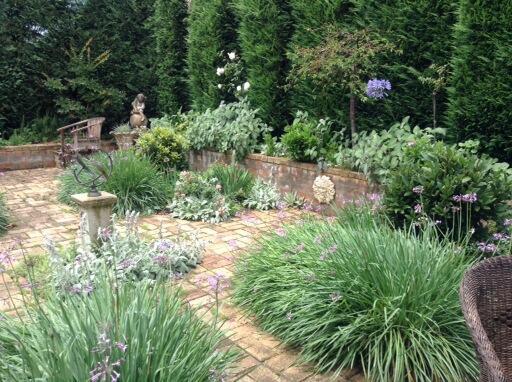
MY OWN SECRET GARDEN
Published on November 24, 2013 17:21
November 23, 2013
BOOK LIST: Books Read in October 2013
This month, I’ve read something old, something new and something blue – partly as a consequence of having visited Hay-on-Wye in Wales in September, the town said to have more second-hand bookshops per square mile than any other town in the world. I adore rummaging around in second-hand bookstores and always come home with bags of old treasures (that I then have to lug all the way back to Australia).
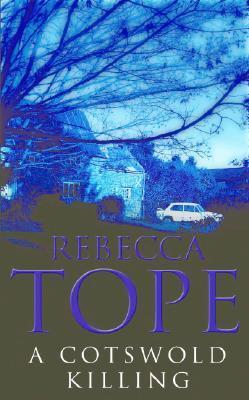
1. A Cotswold Killing – Rebecca Trope
I always like to read books set in places where I am travelling and I love a good murder mystery, so I grabbed ‘A Cotswold Killing’ by Rebecca Trope while I was over there. This is the first in a popular series of murder mysteries featuring the amateur detective Thea Osborne. Recently widowed and trying to begin a new life for herself, Thea decides to try house-sitting in the beautiful Cotswold village of Duntisbourne Abbots. She is woken in the middle of the night by a piercing scream, but does not get up to investigate and is horrified to find a body in the her pond the following day. Guilty and troubled by the murder, she begins to investigate …
‘A Cotswold Killing’ is a quiet, thoughtful and rather melancholy murder mystery, with as much space given to Thea’s interior life as to the events of the murder. I would have liked a much stronger sense of place and a faster pace, but the first in a series is often the worst and so I’m willing to try another of the series, perhaps next time I’m in the Cotswolds.
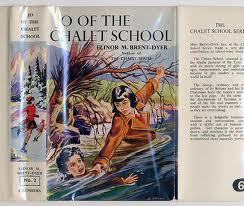
2. Jo of the Chalet School – Elinor M Brent-Dyer
One of the treasures I found in Hay-on-Wye – a third edition of ‘Jo of the Chalet School’ by Elinor M Brent-Dyer, published in 1936, with illustrated bookplates intact. This is the second book in the famous series about a girls’ school in the Austrian Tyrol, but was the first one I ever read. I had found a box of them in my grandmother’s attic while staying there on Christmas holidays, and read my way through them. Years later, I asked my grandmother if I could have that box of books and she said she had thrown them in the bin. If only she had known how much they are worth now! A first edition of ‘Book 1: The School at the Chalet’ is now worth a cool $3,600. Brent-Dyer wrote 59 books in the series in total, and they are the longest-surviving series of girls’ school stories every published, having been continuously in print for more than 70 years. More than 100,000 paperback copies are still sold every year. This one was first published in 1926 and is full of quaint expressions and old-fashioned values, but the setting and time is marvellously created and the story is full of charm and humour, just like I remembered.
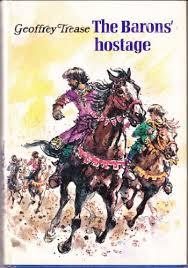
3. The Barons’ Hostage – Geoffrey Trease
Geoffrey Trease is one of the authors I read as a child that gave me my lifelong love of historical fiction. He combined meticulous research with exciting, action-packed story lines that brought history vividly to life. He was remarkable for his ability to make his characters live on the page and, because he was careful to never use any archaic language like ‘prithee’ or ‘I troth thee’, his books are very readable and lively and have lasted the test of time extraordinarily well. I have collected his books for years but since he published 113, I still have quite a few to hunt down.
‘The Baron’s Hostage’ was first published in 1952 – the copy I bought in Hay-on-Wye is a first US edition, published in 1975. Like all of his books, the narrative is shared between a young man and a young woman, in this case Michael and Arlette, who are caught up in the civil war known as the Baron’s War in the late 1200s. A rattling good read.
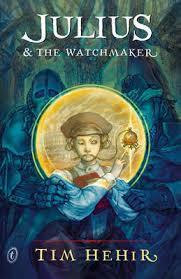
4. Julius and the Watchmaker – Tim Hehir
An action-packed timeslip adventure for boys, that brings together a Dickensian cast of characters with a dash of humour and playfulness. The hero, Julius, is a bullied boy who lives in genteel poverty with his grandfather who owns a bookshop. One day he meets Jack Springheel, a charming rogue, and finds himself on the run with a magical watch and a host of villains on his heels. The magical watch has the ability to transport the owner back and forth and even, perhaps, sideways, in time. These convolutions could be, perhaps, confusing for a child reader (and I would have liked a far more active female character), but the book is funny and fast-paced enough to keep the reader’s interest. A great debut for the author.

5. The Tea Rose - Jennifer Donnelly
A fabulous, big, fat, epic historical novel! The Tea Rose tells the story of Fiona Finnegan who flees a life of poverty and hardship in the docklands of East London, 1888 (a place where Jack the Ripper lurks and ruthless employers keep their workers half-starved) to make a new life for herself in New York. Love, desire, grief, betrayal, revenge … this novel has it all. Although it weighs in a massive 675 pages, the book never felt anything less than compelling reading. A hugely enjoyable read.
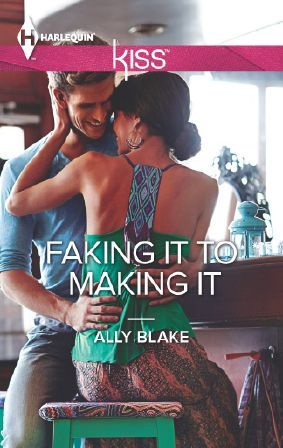
6. Faking it To making it – Ally Blake
I love historical romance but rarely read contemporary romance, for reasons unknown. I met Ally Blake at the Australian Society of Authors’ National Congress, where we were both speakers. She writes ‘fun, fresh, flirty romance’ for Harlequin Mills and Boon and has sold more than 3 million copies worldwide which is most impressive. She was kind enough to give me a copy of one of her books (they are so slim she easily carry them around in my handbag while I’d dislocate my shoulder if I tried to heave copies of my books around with me). I read it in the bath that night and enjoyed it immensely. ‘Faking It to Making It’ is a sexy and funny contemporary romance set in Melbourne and would make a great rom com – I hope Hollywood comes knocking on Ally’s door!
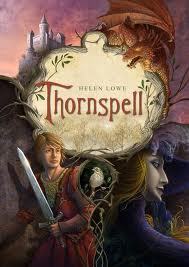
7. Thornspell – Helen Lowe
New Zealand writer Helen Lowe reimagines the Sleeping Beauty story from the point of view of the prince in this beautiful, romantic fantasy for young adults. Prince Sigismund has grown up in a castle whose gardens and parklands are surrounded by a deep, tangled forest. He is kept locked away from the world, and so longs for adventures like the ones in the stories he loves so much – fantastical tales of knights-errant and heroic quests, faie enchantments and shape-shifting dragons.
One day a beautiful and mysterious lady in a fine carriage speaks to him through the castle gates, and Sigismund's world begins to change. He dreams of a raggedy girl trapped in thorns, and a castle that lies sleeping … soon he is caught up in an adventure as perilous and strange as that of any story he had ever heard …
I absolutely adored this book! I love fairy tale retellings, especially ones that are full of magic, peril, and romance, and ‘Thornspell’ is one of the best I’ve ever read. It reminded me of Robin McKinley’s early books, which are still among my favourite fairy tale retellings. ‘Thornspell’ very deservedly won the Sir Julius Vogel Award for Best YA Novel – it’s a must red for anyone who loves fairy-tale-inspired YA fantasy.
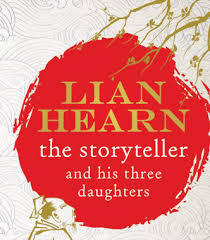
8. The Storyteller & His Three Daughters – Lian Hearn
Lian Hearn is the author of the gorgeous bestselling ‘Tales of the Otori’ fantasy series for adults, set in an alternative feudal Japan, as well as a number of children’s books published under her true name, Gillian Rubenstein. The first book in the Otori series, ‘Across the Nightingale Floor’ is one of my favourite novels, the medieval Japanese setting being utterly fresh and fascinating.
‘The Storyteller and His Three Daughters’ is a departure from her other Lian Hearn books in many ways. The setting is Japan in the 1800s, and from many references to true historical events and people, it is clear that this is not an alternative world fantasy but rather a historical novel. The main character is a middle-aged storyteller named Sei who is struggling to keep alive traditional tales and storytelling techniques in a culture that is being increasingly dominated by Western values and customs. He finds himself out of joint with the times, and unable to write anymore. However, he cannot stop observing and speculating on the lives of the people around him and finds himself creating a tale of love, jealousy, murder, treason and betrayal that seems as if it might be all too true.
Drawing upon Japanese storytelling techniques, ‘The Storyteller and His Three Daughters’ is an ambitious and unusual meditation on the nature and meaning of art.
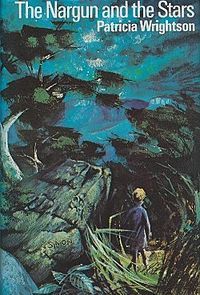
9. The Nargun & the Stars – Patricia Wrightson
Patricia Wrightson was my favourite Australian author when I was a child, and ‘The Nargun and the Stars’ was one of my favourites of her books. I found myself giving a very impassioned speech about her at an event on ‘Writing Villains for Children’ at the NSW Writers Centre in late October, which led into a long conversation with members of the audience afterwards. I came home, went straight to my bookshelf, got down my old copy of this book, and read it again that night. It’s as wonderful as I remembered.
Published on November 23, 2013 05:00
November 21, 2013
INTERVIEW: Thomas Harding, author of Hanns and Rudolf
[image error]
I'm very glad to welcome Thomas Harding to my blog today. He is the author of one of the most fascinating and chilling non-fiction books I have read in a long while: Hanns & Rudolf: The German Jew and the Kommandant of Auschwitz which I reviewed earlier this week (you can read the review here).
1. Tell me all about your book.
This is the story of my uncle, a German Jew, who tracked down and caught the Kommandant of Auschwitz. It is about two men, who grew up in Germany, whose lives diverged and then intersected in an extraordinary way. It's about what makes a man face his persecutors, it's about revenge, and it's ask how does someone became one of the greatest mass murderers in history.
[image error]
2. How did you get the first idea for it?
In 2006 I heard the eulogy for my uncle Hanns. Much was familiar: the family in Berlin before the Second World War, their flight to Britain in 1936, my uncle joining the British Army and arriving in Belsen shortly after its liberation. But there was something that I had never heard before, that my uncle was a war crimes investigator at the war's end, and that he had caught the Kommandant of Auschwitz. I was gripped by curiosity, and decided to write about this amazing story.
[image error]
Rudolf Hoess and a grave pit found at Auschwitz
3. What was the most interesting thing you learned while writing it?
Two things. My uncle's decision to allow his men to beat Rudolf Höss during his arrest, but to stop them from killing him, therefore allowing the Kommandant to give evidence in Nuremberg which changed the momentum of the trial. This showed enormous foresight and control. And the fact that while the Kommandant orchestrated this appalling mechanism of mass murder at Auschwitz he was deeply loved by his family. This is so interesting to me, that one man can exhibit such opposite sides to his personality.
[image error]
Hanns and Rudolf after he had been caught & beaten by Hanns's men
4. What was the most difficult or challenging aspect of writing this book?
Writing about the horrors of the camp, I found this very difficult, and meeting with the family of Rudolf Höss, making Auschwitz so real, so close.
5. What are the best 5 books you've read recently?
• Alone in Berlin by Hanns Fallada
• The Spy Who came in from the cold by John Le Carré
• The Ghost Map: The Story of London's Most Terrifying Epidemic--and How It Changed Science, Cities, and the Modern World by Steven Johnson
• A Good Life by Ben Bradlee
• The Book of Barely Imagined Beings: A 21st Century Bestiary by Caapar Henderson
[image error]
6. What lies ahead of you now?
I am on a book tour in USA and Canada to promote Hanns and Rudolf (and loving getting to hear people's reactions to it) and working on two other books
Published on November 21, 2013 05:00
November 19, 2013
BOOK LIST: Best books on World War II chosen by Thomas Harding
[image error]
Thomas Harding is the author of the fascinating non-fiction book, Hanns & Rudolf: The German Jew and the Kommandant of Auschwitz, which I reviewed earlier this week (you can read the review here).
He’s very kindly taken the time out of his busy touring schedule to prepare a list of the best non-fiction books he’s read on World War II:
[image error]
1. Hannah Arendt: Eichmann in Jerusalem. Provides a key exploration of the ‘banality of evil’.
[image error]
2. Rudolf Hoess: Commandant at Auschwitz Rudolf Hoess, also known as Death Dealer: The Memoirs of the SS Kommandant of Auschwitz. This autobiography was written in a Polish prison cell while Rudolf awaited his death sentence
[image error]
3. Sybille Steinbacher: Auschwitz: A History. A fine introduction to the camp and its background
[image error]
4. Robert G. L. Waite: Vanguard of Nazism. The best book on the Freikorps para-military movement of the 1920s
[image error]
5. Daniel Goldhagen: Hitler’s Willing Executioners. An examination of why ‘ordinary’ Germans perpetrated the Holocaust.
Please leave a comment: I love to know what you think
Published on November 19, 2013 05:00
November 18, 2013
BOOK REVIEW: Hanns & Rudolf by Thomas Harding
[image error]
Title:
Hanns & Rudolf: The German Jew and the Hunt for the Kommandant of Auschwitz
Author: Thomas Harding
Publisher: William Heinemann
Age Group & Genre: Biography/Historical Non-Fiction for Adults
Reviewer: Kate Forsyth
The Blurb:
The untold story of the man who brought a mastermind of the final solution to justice.
May 1945. In the aftermath of the Second Word War, the first British War Crimes Investigation Team is assembled to hunt down the senior Nazi officials responsible for the greatest atrocities the world has ever seen.
One of the lead investigators is Lieutenant Hanns Alexander, a German Jew who is now serving in the British Army. Rudolf Höss is his most elusive target.
As Kommandant of Auschwitz, Höss not only oversaw the murder of more than one million men, women, and children; he was the man who perfected Hitler’s program of mass extermination. Höss is on the run across a continent in ruins, the one man whose testimony can ensure justice at Nuremberg.
Hanns and Rudolf reveals for the very first time the full, exhilarating account of Höss’s capture, an encounter with repercussions that echo to this day. Moving from the Middle Eastern campaigns of the First World War to bohemian Berlin in the 1920s to the horror of the concentration camps and the trials in Belsen and Nuremberg, it tells the story of two German men- one Jewish, one Catholic- whose lives diverged, and intersected, in an astonishing way.
[image error]
Hanns & Rudolf
What I Thought:
The author of this utterly riveting and chilling book found out, at his great-uncle’s funeral, that the mild-mannered old man he had known had once been a Nazi hunter. And not just any Nazi. His Great Uncle Hanns had been the man who had hunted down and caught Rudolf Höss, the Kommandant of Auschwitz and the architect of the Final Solution that saw millions of people efficiently and cold-bloodedly murdered.
This stunning realisation led Thomas Harding – a journalist who has written for the Financial Times, Washington Post and The Guardian – on a quest to find the whole story. His research is remarkable and at times harrowing. As a result, his book Hanns and Rudolf is as illuminating and fact-filled as a biography, and as personal as a memoir. Harding tells the life stories of both men in parallel, moving from their childhood towards the outbreak of war, which happened when they were both young me, and then onwards through all the horrors of the death camps, Rudolf’s to escape and hide himself and Hanns’s determination to hunt him down, and then on the execution of one and the peaceful old age of the other.
The most awful aspect of the book is, of course, Auschwitz. The steps Rudolf Höss took to turn this prison camp into the most efficient killing machine the world has ever known is told with absolute clarity, often in the Kommandant’s own words. The lack of guilt or pity or mercy is utterly horrifying.
However, the book is so filled with a sense of the strength and resilience of the human spirit that I was left both moved and uplifted. This is one of the best non-fiction books I have read in a long while.
[image error]
Shoes of Auschwitz victims
Thomas Harding's website
PLEASE LEAVE A COMMENT – I LOVE TO KNOW WHAT YOU THINK
Published on November 18, 2013 16:48



